Description
Product Description
The low temperature coolant circulation pump adopts the air-cooled fully enclosed compressor unit for cooling and the microcomputer intelligent control system. It can provide low-temperature circulating cooling water (liquid) or low temperature thermostatic water (liquid) to cool equipment or keep equipment at a constant temperature, such as rotary evaporator, fermentation tank, electron microscope, low temperature chemical reactor, electron spectrometer, mass spectrometer, density meter, freeze dryer, vacuum coating apparatus, reactor and other equipment.
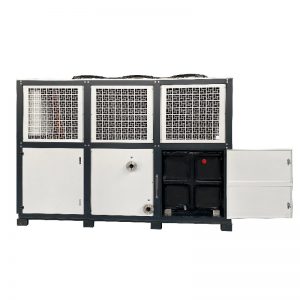
Product Features
- The system features compact structure, less land occupation, high cooling and heating efficiency.
- The large size color touch screen can clearly display the real-time temperature change during the process engineering.
- The circulating pump and compressor can work continuously at low temperature, control heat dissipation and protect the system from damage.
- The overhead design of the fan can meet more heat dissipation requirements. It is convenient and quick to maintain the equipment with the door and window type opening and closing design.
- The circulating pump adopts the shield pump to solve the leakage problem of the circulating pump.
Product Parameters
| Material | Metal case and stainless steel liner |
| Model | DLSB 2000L-100℃ |
| Minimum Non-Loaded Temperature | -100℃ |
| Temperature Fluctuation | ±2℃ |
| Refrigerant | R22 R23 R14 |
| Cooling Capacity | 86200W-1470W |
| Machine Power | 99900W |
| Circulating Power | 4000W |
| Flow of Circulating Pump (Optional) | 250L |
| Lift (Optional) | 25M |
| Ambient Temperature | ≤25℃ |
| Ambient Humidity | ≤70% |
| Power Supply | 480V/60HZ 380V/50HZ |
| Working Current | 140A 220A |
Product Parts
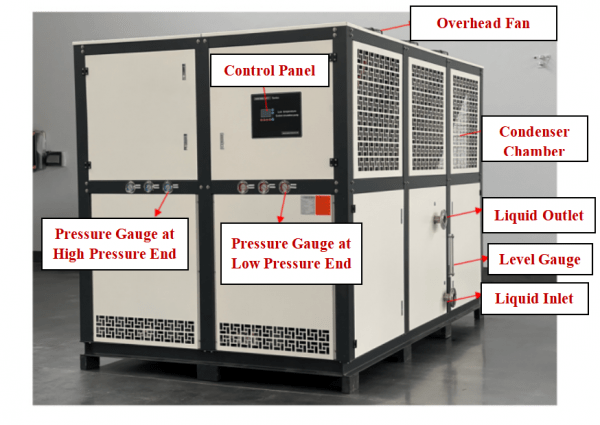
Product Details
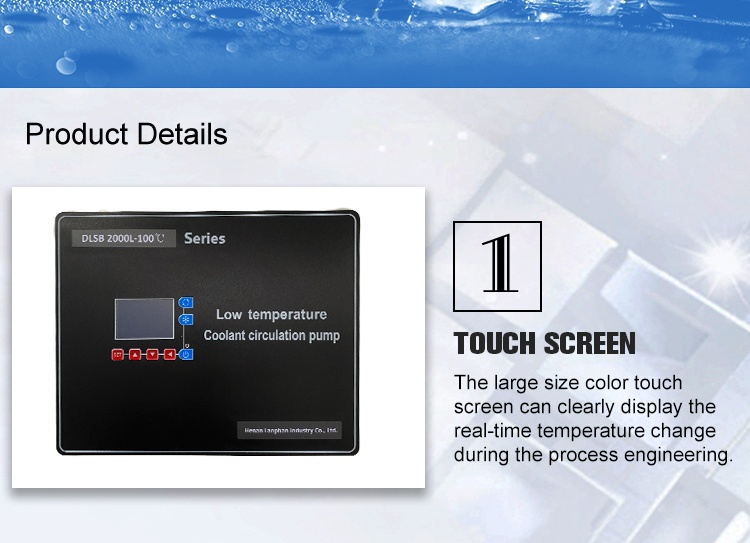
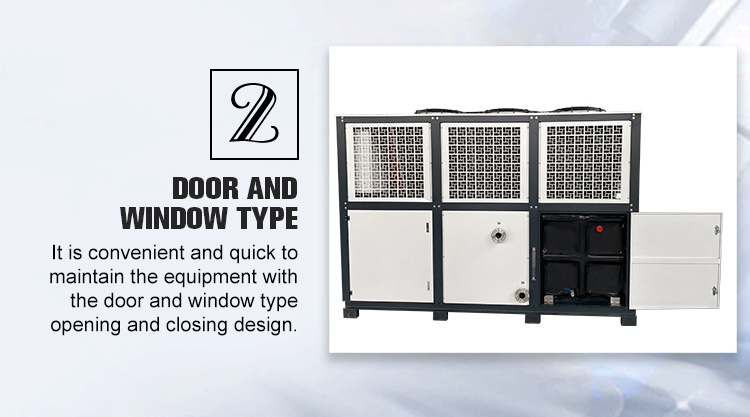
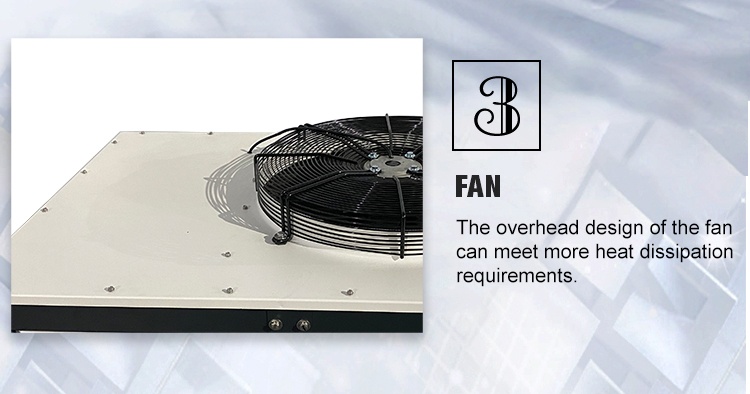
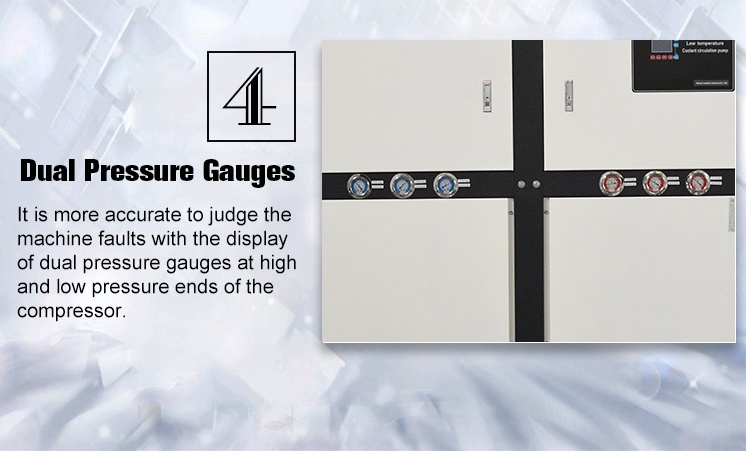
Troubleshooting for Not Working
1. Firstly, pay attention to whether the boot order is correct.
- Add proper secondary refrigerant;
- Connect the power cord to the special power supply;
- Close the circuit breaker;
- Press the “Power” button;
- Turn on the circulating switch;
- Turn on the cooling switch;
- Turn on the cool storage device; (The fifth and sixth points are important.)
2. Check whether the secondary refrigerant is correct. More than 97% of the ethanol solution should be used in most cases. (Don’t use motor vehicle antifreeze fluid as the secondary refrigerant, which will damage the service life of the pump after a long time.)
3. The injection of the secondary refrigerant should be in line with the coil pipe in the reservoir, not too much or too little. (The too little secondary refrigerant will influence the cooling effect of the pump.)
4. Confirm if there is fluorine in the compressor: there is a pressure gauge on the equipment that is equal or more than 30L, so directly see the value of the pressure gauge. Or ask professional personnel to judge whether it is normal by taking a picture. (Normally, the pressure gauge should be in the range of 0.8-0.9MPa at room temperature before starting the pump; For double compressors, the pressure gauge of the primary compressor should be in the range of 0.8-0.9MPa at room temperature, and that of the secondary should be in the range of 1.4-1.9MPa at room temperature.) The pressure gauge should display in the range of 0-0.25MPa during the normal starting state of the pump. (The double compressors are same as it.)
5. If there is sufficient fluorine in the compressor: It can be defined as fluorine deficiency if the pressure gauge value of the compressor at room temperature is lower than 6MPa when the pump is shut down. But the value should be at least 0.2MPa. (Too low pressure will make the foam water be drawn into the compressor, damaging the compressor.) It is necessary to check whether there is any leakage in the equipment firstly at this moment. The specific method is as follows: apply soapy water, detergent, and other foaming liquids to the welding place of copper pipes inside the compressor, and observe whether there are bubbles at this time. It will prove that there is leakage in the pipeline if bubbles appear. Ask professional personnel to fix the leakage. Inject the refrigerant according to the types and methods provided by our company after fixing, and then restart the equipment.
6. Don’t add any secondary refrigerant into the cool storage device when the temperature of the secondary refrigerant is lowered to the setting value by the pump.
7. It is required to clean the condenser when the pump works slowly or badly. (Clean the condenser of the pump at least once a week to avoid the blockage of the condenser and prevent the compressor from burning down due to the heat can’t be removed.)
Precautions for Use
- Check whether the inlet and outlet valves of the refrigeration equipment can be normally opened and the pressure is in the normal range.
- Check whether the power supply of each device is turned on.
- Put the secondary refrigerant of more than 97% ethanol into the reservoir before using a low temperature coolant circulation pump. The liquid level of the medium should submerge the coil pipes inside the reservoir.
- Check the power supply: The power of the power supply should be greater than the total power of the equipment, and the power supply should be well grounded.
- The equipment should be placed in a dry and ventilated place. There is no obstacle around it within 500mm.
- Pay attention to the liquid level in the reservoir. Add the secondary refrigerant in time when the liquid level is too low.
- The temperature of the inlet and outlet pipes is relatively low during the working time, so don’t touch them in case of frostbite.
- All switches should be turned off and the power supply should be cut after use.
- Clean the condenser regularly to prevent the use efficiency of the product being reduced because of too much dust.

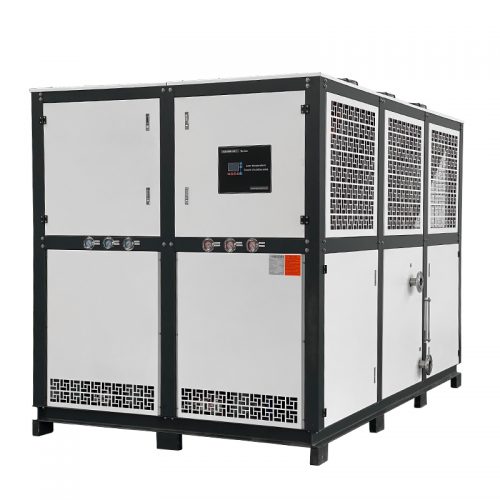
Reviews
There are no reviews yet.